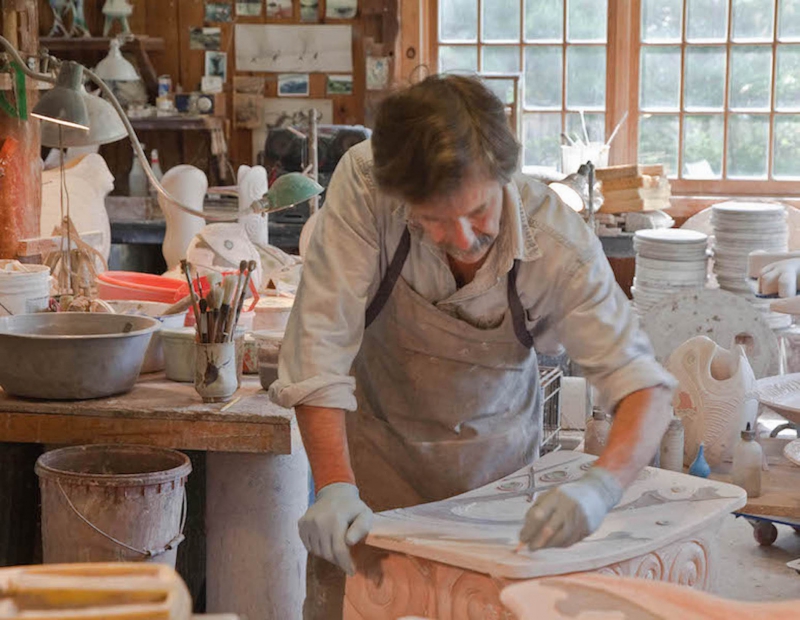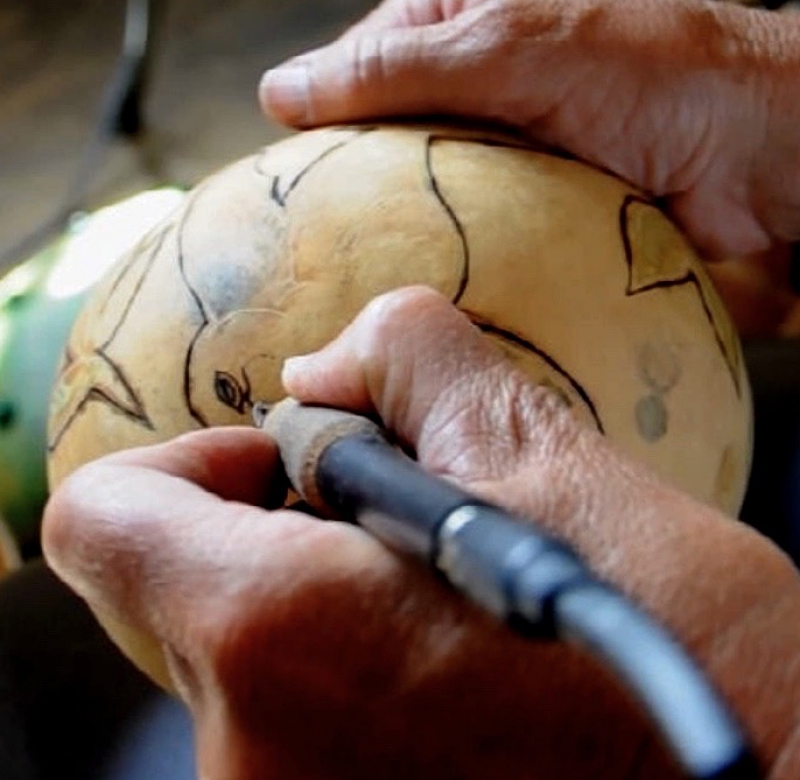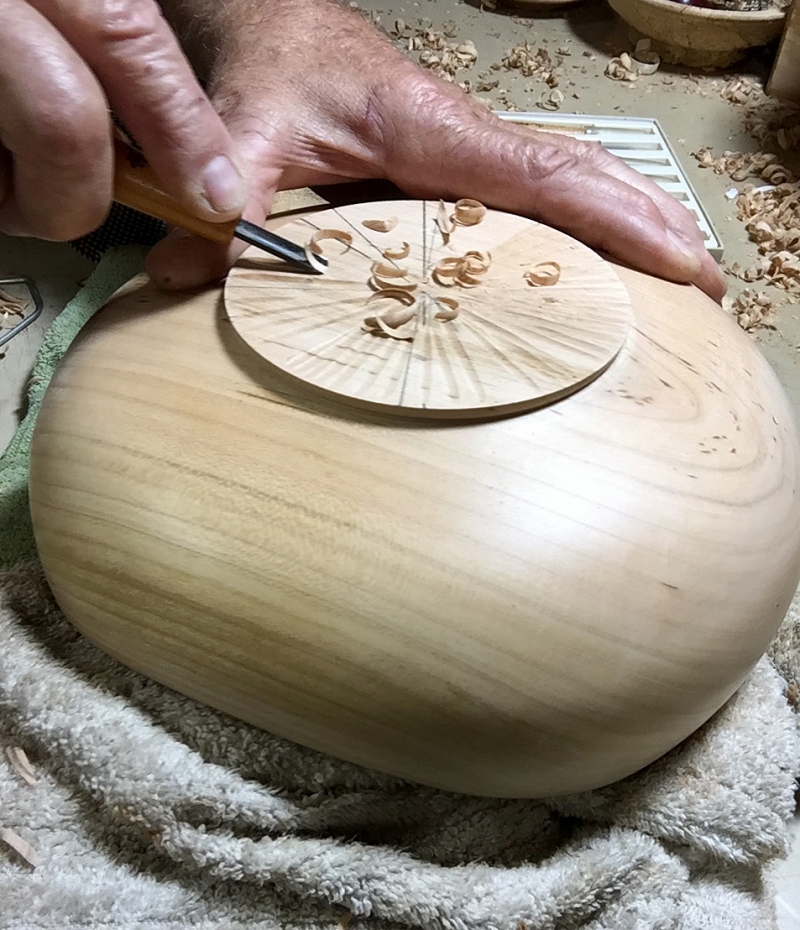Might it be that the more we digitize the more we risk losing what’s human?
By Ann C. Landenberger
At a recent regional juried craft show a woodworker received an award for a table featuring inlaid maple leaves. Kudos to the craftsman.
But wait. On closer examination, one sees that each maple leaf is identical: perfect. And the inlay is razor-edged precise. The woodworker’s website boasts that his shop’s work is achieved by skilled craftsmen. We’d assume skilled at hammer and chisel when, in fact, the skill would be at managing algorithms: Though seen in a milieu of hand craft, this table was the product of digital fabrication.
As much of human function is being digitized it’s little surprise that craft is too. Digital fabrication — use of CNC (computer numerical control) routers, laser cutters, 3-D printers, to name the most common machines — is evident with increasing frequency at craft shows and in galleries. Why’s that raising eyebrows? Might it be that the more we digitize, the more we risk losing what’s human? The more we fabricate by machine, the less we value — or can afford — what’s made by hand.
Purists cringe at digital fabrication. Master wood carver David Esterly laments in Lost Carving, [T]here’s a nightmarish regularity to computer-controlled modeling. …But CNC work costs pennies and nothing will stop its advance …[usurping] the human hand for almost every kind of rote work.”
Artist T. Breeze Verdant has worked for 30 years with power tools — each guided by his hands. Having first mastered marquetry, his work now is primarily inlay jewelry made from recycled materials with provenance: ebony from an ancient shipwreck and antique piano keys, copper piano string windings, scraps from musical instrument makers. Each new scrap he scavenges is repurposed, upcycled into a work of wearable art — by hand.
His objection to digital fabrication is that in a perfectly cut laser image, for example, “there is no hand of the maker” evident.
Raku artist Richard Foye adds: “The mark of the hand will always add value to a pot made by hand. Pottery has been made by machines for more than two centuries, but this type of ware always lacks something which I believe most people can distinguish: this applies to most craftsmanship.” When the hand is evident, so is heart and soul: “… creativity is instrumental, not divorced from the making,” Esterly remarks. “You invent while you make… You think with your hands. The carving thinks with your hands.”
Verdant explains: “We want reassurance that spontaneity is still part of process; that humanness is not lost.”
Digital fabrication admittedly presents both potential and complication. Its function, explains Conor Martin, freelance fabricator and former instructional support technician for digital fabrication at SUNY/New Paltz, “is to create a tangible object via a created file using either 3-D modeling or vector-based graphics software.” Take a design and write it into a program; the computer will do the rest with just a few human steps involved.
“Yes, he says, there is a regularity and consistency to the work of a router taking commands from a computer model and, while one using the CNC router may get fewer splinters, to deny that artist-fabricator validity by qualifying their work as being without “humanness” seems naïve and closed-minded.
Woodworker and installer Blake Johnson, who often uses digital fabrication in his processes, reflects: “I think there is a valuable quickness, a sense of agility in the design process that someone fluent with design or modeling software can find very helpful in sketching and developing ideas.”
Martin reassures: “Digital fabrication machines are tools, nothing more. Instead of viewing this evolution of computers’ involvement in traditional craft as a binary battle between good and evil, it’s time to take a more optimistic approach to the situation and to see the benefits. Fine art and digital fabrication are not mutually exclusive. More artists are finding a balance between the two. There are things that computers are great at. There are also tasks and techniques that are just better done by hand and by eye. The truly savvy artist would recognize the inherent value in each.”
Verdant adds — and Martin agrees — that the machine should feed the artist; the artist shouldn’t feed the machine.
Verdant sees that digital fabrication has its place, saying that “Using a machine opens doors that should be opened, because that’s what we human beings do.” He also cautions: “Just don’t deceive the public about the objects they are considering for purchase. Describe accurately what it is and how it’s made. The rub is when someone uses digital fabrication for a mass-producing shortcut and charges amply for a piece capitalizing on consumers’ recent memory of what it cost to do such work by hand. Then the product is standing on the shoulders of centuries of hard skilled labor.”
To that Johnson points: “Image-based culture and oversimplification of personhood are much greater threats to our loss of humanness today than digital fabrication is to handcraft. The emphasis on rapidity of production over quality and soul of an object is a greater problem than the influence of digital technologies alone.”
And so, when browsing open studios, craft fairs, museums and galleries this season, consider this: Are you drawn to the impressive “Oh, wow” factor of a machine’s output? Are you touched by the hand of a maker? Or both?
As we continue to wrestle with what it is to be human as manifest in what we produce, one can hope a middle path will emerge, not only in fine art and craft but also in the everyday of a digitized world.
The author, who ponders the loss of longhand to computer-generated text, is working on a book on the impact of digitization on heart, mind, and art and welcomes feedback from craft consumers, enthusiasts, and craftsmen alike. Share yours at verbatimvt@gmail.com.
























































